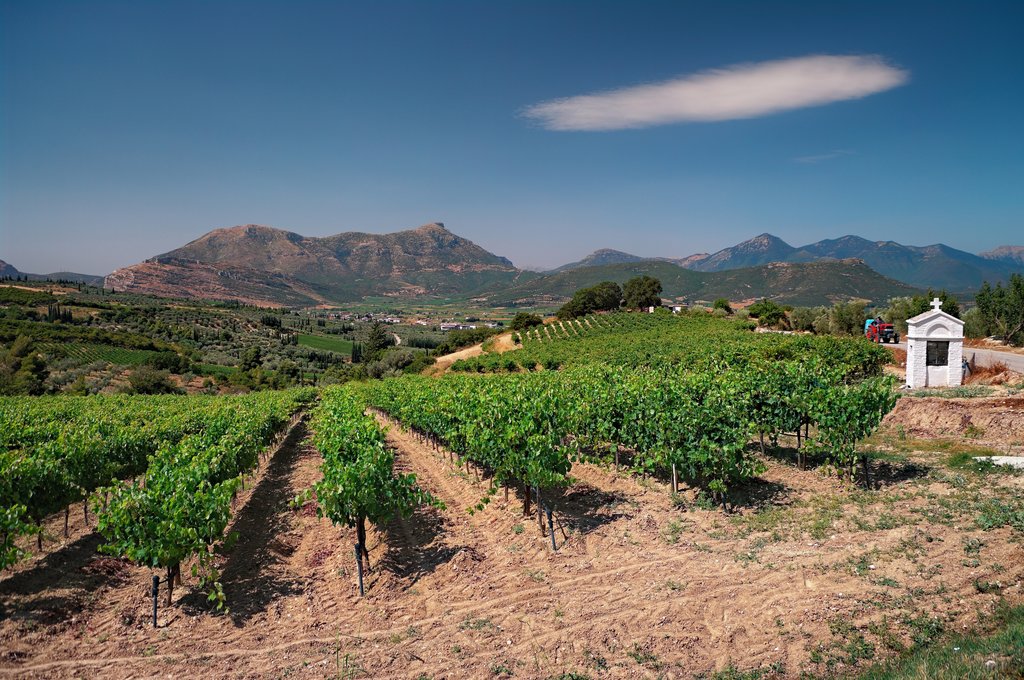New products
Showing 1–30 of 32 results
Showing 1–30 of 32 results

The Peloponnese wine region occupies a large peninsula in southern Greece, connected to the mainland by the narrow Isthmus of Corinth. It is one of the most important and productive wine areas in the country, responsible for around 31% of Greece’s total wine production and about a quarter of its PDO wines. The region combines a long and rich winemaking heritage—Homer once described it as “a place full of vines”—with diverse landscapes and climates that give its wines distinctive personality. During the Middle Ages under Venetian rule, sweet Malvasia wines from this area were shipped to major European markets such as London and Paris, cementing the region’s reputation in the wine trade. The landscape of the Peloponnese is remarkably varied, ranging from snow-capped mountains and rugged valleys to fertile plains and idyllic beaches. This diversity shapes a mosaic of microclimates. Coastal areas enjoy a warm Mediterranean climate with mild winters, while the central and elevated parts of the peninsula are much cooler, allowing for slow ripening and the preservation of acidity. The soils are equally diverse, from limestone and calcium carbonate to more fertile alluvial compositions in valley floors. Hot days combined with cool nights help produce grapes with a balance of ripeness, flavor concentration, and freshness. Peloponnesian wines cover a wide stylistic spectrum. The whites are often crisp, mineral-driven, and aromatic, showing floral notes, citrus, and refreshing acidity, while the reds range from light and fragrant to full-bodied and structured with good aging potential. The region is also famous for its sweet wines, particularly the Mavrodaphne of Patras, which develops rich flavors of caramelized dark fruits and warm spices after at least a year of oak maturation. The grape varieties of the Peloponnese are a mix of indigenous treasures and international classics. Among the reds, Agiorgitiko stands out as the most emblematic variety, producing everything from delicate rosés with hints of spiced raspberry to powerful, age-worthy reds. Mavrodaphne is the cornerstone of the area’s sweet wine production, while Refosco and Cabernet Sauvignon are also cultivated to add structure and depth to blends. White varieties include the aromatic Moschofilero, known for its floral and citrus character, the mineral and high-acid Assyrtiko, and the versatile Roditis, which produces dry wines with lemony freshness. International whites such as Chardonnay, Gewürztraminer, and Robola are also present, often blended with local grapes to create distinctive styles. The region is divided into eight main subregions—Argolis, Arcadia, Achaia, Ilia, Corinthia, Laconia, Messinia, and Kefalonia—each with its own wine identity. Corinthia and Argolis are home to Nemea, one of Greece’s most prestigious PDO zones, producing Agiorgitiko wines sometimes referred to as “Hercules’ Blood.” Achaia is another key subregion, with a terroir defined by seaside Mediterranean conditions and calcium carbonate soils, producing notable Roditis-based PDO Patras wines and Mavrodaphne dessert wines. In Arcadia, the Mantinia zone is renowned for Moschofilero wines from higher-altitude vineyards, delivering elegant, aromatic whites with crisp acidity. With its combination of ancient tradition, varied terroirs, and a wide range of both indigenous and international grape varieties, the Peloponnese wine region produces wines of great diversity and character, maintaining its historic role as one of Greece’s most celebrated viticultural heartlands.